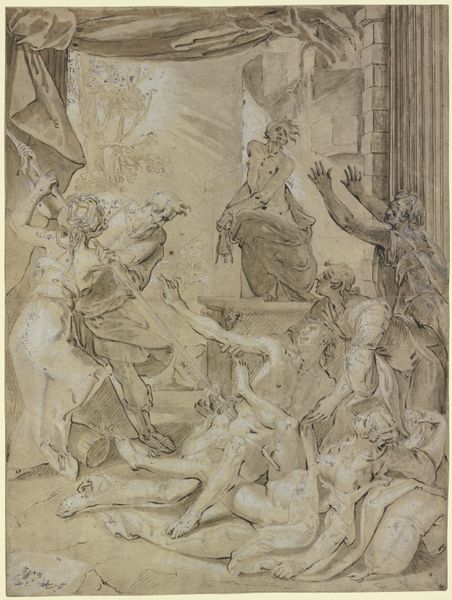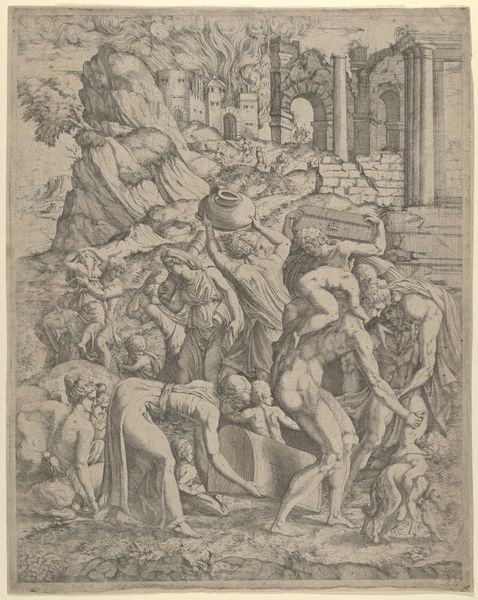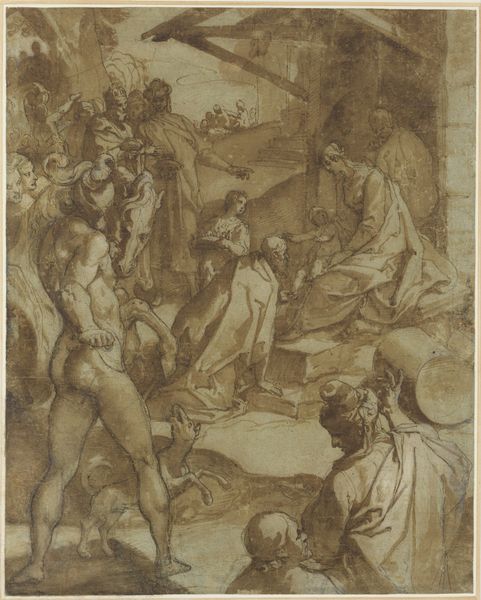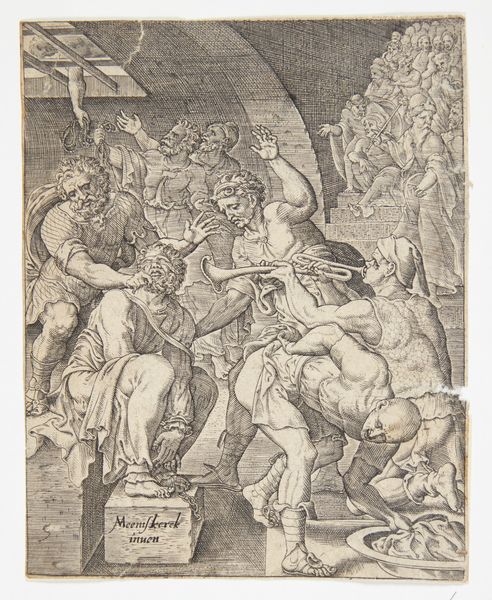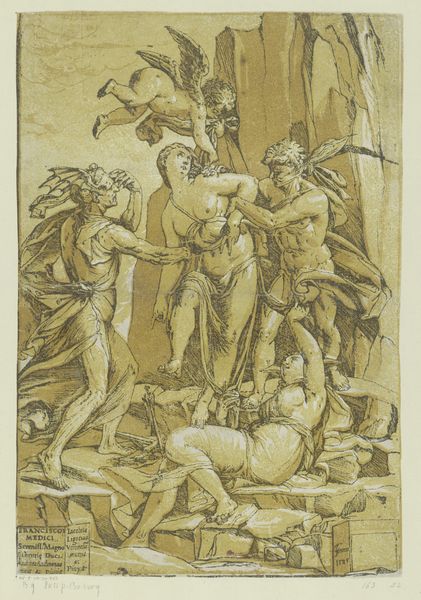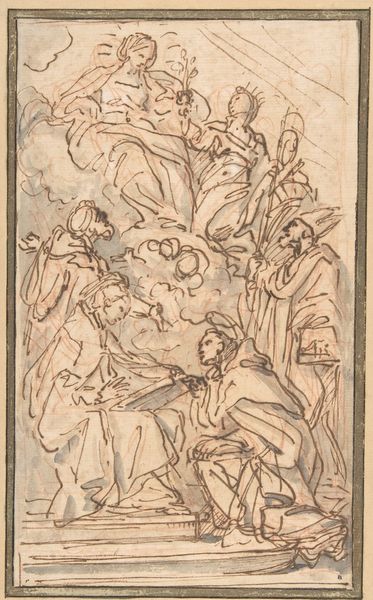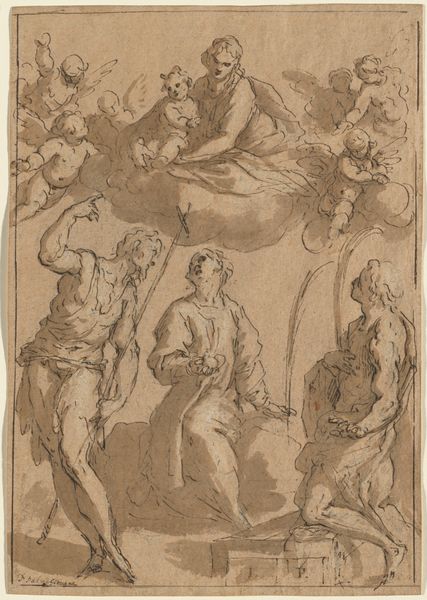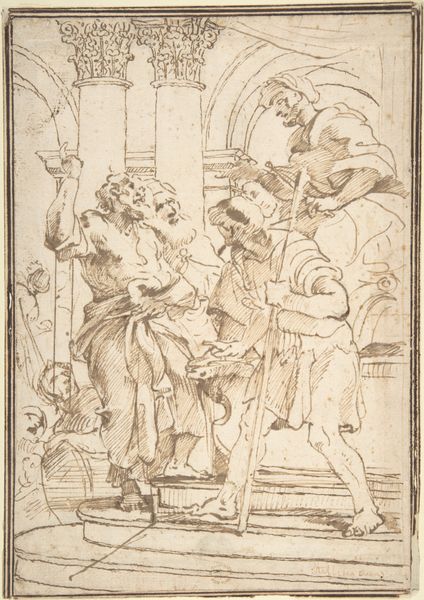
Virtue as a young woman surrounded by four figures representing love, error, ignorance and opinion 1585
0:00
0:00
drawing, print
#
drawing
#
allegory
#
narrative-art
# print
#
mannerism
#
figuration
#
female-nude
#
italian-renaissance
#
male-nude
Dimensions: Sheet: 19 1/8 × 13 3/16 in. (48.5 × 33.5 cm)
Copyright: Public Domain
Andrea Andreani created this chiaroscuro woodcut, "Virtue as a young woman surrounded by four figures representing love, error, ignorance and opinion", sometime between 1588 and 1629. Produced in Italy, the image is awash with references to Renaissance Neoplatonism, a philosophical school that saw beauty as a pathway to virtue. But, if virtue is so desirable, why does it need protecting? We might interpret this image in relation to the artist's social context. Andreani lived and worked in Mantua, a city ruled by the Gonzaga family. This was a highly stratified society, where an individual's virtue was closely tied to their social status. Here, the artist seems to be suggesting the importance of guarding virtue, especially in young women, from the threats of ignorance, error, and even love. Art history provides tools to understand not just the aesthetic qualities of artworks, but also their social meanings, which can be gleaned from letters, archives, and other historical documents. By looking at art through this lens, we can better understand the values and beliefs of the people who created it.
Comments
No comments
Be the first to comment and join the conversation on the ultimate creative platform.

